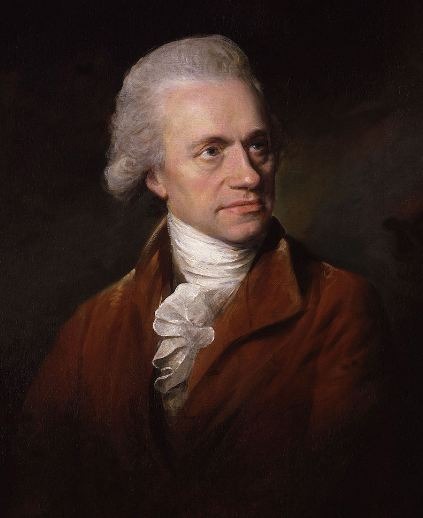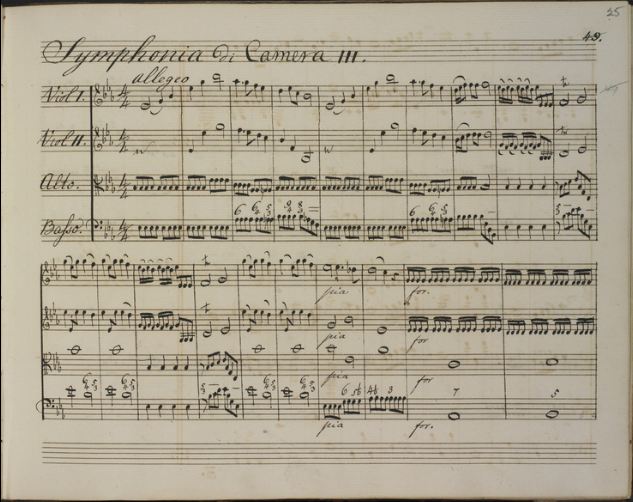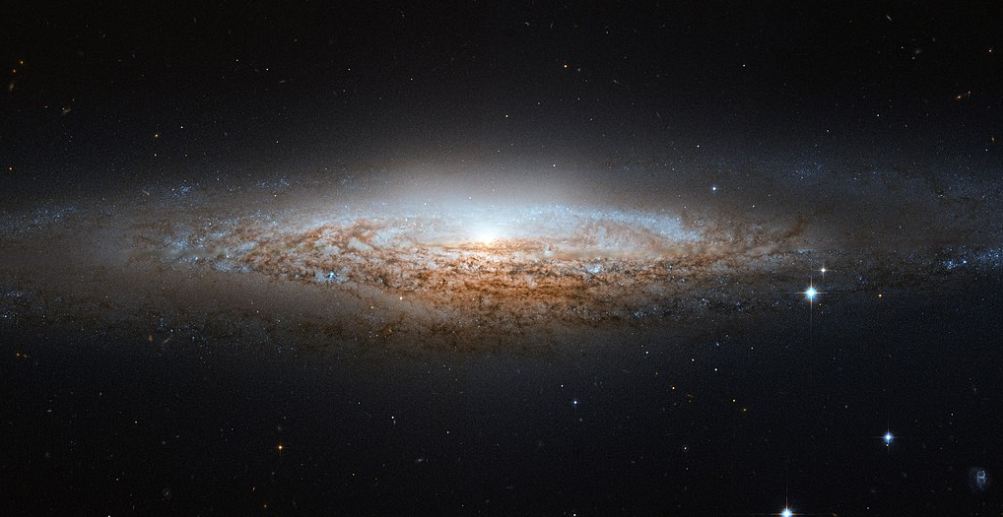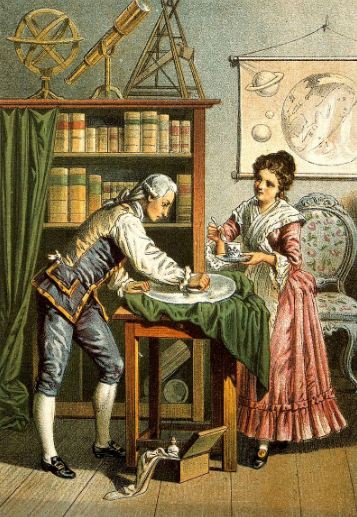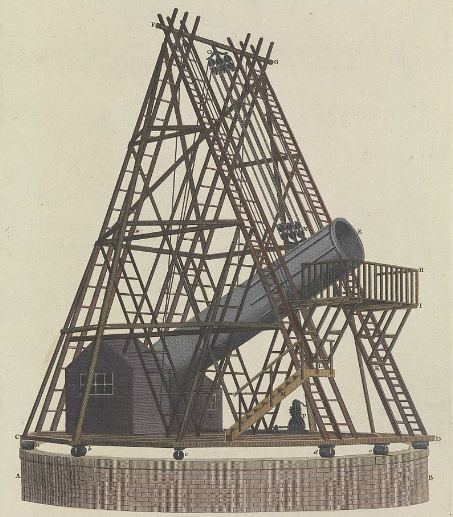Frederick William Herschel mostly known as William Herschel was a German astronomer and composer of music. He migrated to Great Britain in 1757 when was nineteen. William Herschel was known for many scientific achievements such as constructing the first large telescope in 1774. He spent many years surveying the sky and stars.
In addition to that, he was the one who discovered Uranus, which brought him fame overnight. As a result, he was asked to produce new telescopes that would help the astronomers and scientists at the time to discover and explore more about the universe.
Let’s dig a bit deeper and reveal some other significant achievements of William Herschel that are relatively less known to the world.
Early Life and Musical Activities
Herschel was born to Issak Herschel and Anna lise Moritzen in the Electorate of Hanover in Germany, then part of the Holy Roman Empire. His mother belonged to German Lutheran ancestry. Herschel’s forefathers arrived from Pima, in Saxony.
For a while, theories were floating around that his forefathers were Protestants who were questioned by Hamel since the surname Herschel already existed in the same area a century earlier.
In addition to that, Herschel’s father was an oboist in the Hanover Military Band. The year 1775 saw the Hanoverian Guards regiment, including Wilhelm and his brother Jakob who were performing as oboists were told to move to England.
At the time, it was King George II under whom the crowns of Great Britain and Hanover were united. As France was being threatened by an attack, the regiment was recalled to defend Hanover. Upon being defeated at the Battle of Hastenback, Isaak sent his two sons to seek refuge in England in late 1757.
This was a time when Jakob had received his dismissal from the Hanoverian Guards while Wilhelm was accused of desertion. Herschel was `19 at the time and a quick student of the English language. Apart from playing the oboe, he also played the violin and harpsichord and then the organ later on. His musical career includes 24 symphonies along with some church music.
In 1761, Herschel moved to Sunderland when Charles Avison hired him for performing in his Newcastle orchestra as first violin and soloist. He performed in the orchestra for one season.
As Herschel mastered his musical skills, he became the organist of the Octagon Chapel, Bath, and performed at his first concert in 1767. His sister Caroline also joined him later on in 1772 while living with William. A few years later, he was made the director of the Bath orchestra while his sister appeared as a soprano soloist often.
Astronomy
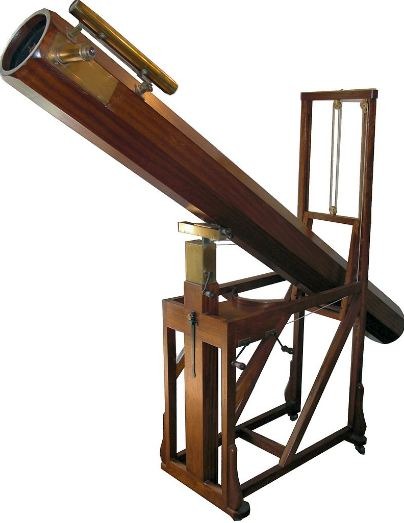
Herschel was well-aware of the eighteenth-century “philosophical Gentleman” or philomaths and even got along well with the local and practical tastes. His curiosity and interest in music led him to astronomy.
While he was engaged in music, he consulted Robert Smith’s book of Harmonics and then later took up “A Compleat System of Opticks” of the same author. The book described and was based on the construction of telescopes.
Additionally, he also read James Ferguson and William Emerson who were known to be one of the most prominent names in the world of astronomy. Soon, Herschel found himself being trained by a local mirror-builder and gathered his own tool while polishing his skills.
As a result, he began building his own reflecting telescopes. Herschel spent 16 hours a day both grinding and polishing the speculum metal primary mirrors. And since his brother Alexander was a skilled mechanical craftsperson, Herschel often sought help from him.
Herschel’s official astronomical journey began in 1773 when he started looking at the planets and stars while noting his observations in his astronomical journal. Initially, his observations included the rings of Saturn and the Great Orion Nebula.
In 1779, Herschel was invited by Sir William Watson to become a member of the Bath Philosophical Society. As a result, he became an active member and enlarged his social circle through Watson. After a few years, Herschel was elected as a member of the American Philosophical Society in Philadelphia.
Double Stars
Herschel’s early observational work focused on finding and discovering a pair of stars that were virtually close together. At the time, the astronomers were hopeful that the apparent separation and relative location of these stars would provide important information about the distance of the stars from the Earth.
It was Galileo Galilei who suggested the later method. In 1779, Herschel while living in New King Street began a systematic search for the stars from the back garden of his house, using a Newtonian telescope featuring a speculum that he created on his own.
Throughout his astronomical career, Herschel was able to identify many stars and carefully complied the information in his journal by mentioning their relative positions in the two catalogs presented to the Royal Society in London in 1782. Following the two catalogs, a third one was released in 1821.
It is said that Herschel might have been impressed by John Mitchell of Thornhill’s published work in 1767. Upon Michelle’s death in 1793, Herschel bought a ten-foot-long, 30-inch reflecting telescope from Michelle’s estate.
In 1797, Herschel restarted his work on measuring systems and discovered over 800 confirmed double or multiple star systems. His discoveries and contributions laid the foundation for modern binary star astronomy.
Uranus
In 1781, while searching for his double stars, Herschel discovered an object appearing as a disk. Initially, he thought that it was a comet or a stellar disc. As a result, he reported the sighting to Nevil Maskelyne the Astronomer Royal.
Herschel continued to make many observations while Russian Academician Anders Lexell computed the orbit and found that the object was probably planetary. Herschel agreed that it must be a planet beyond Saturn’s orbit. Initially, he named it the “Georgian Star”, which also brought him favor but the name did not stick.
At the time, in France, anything associated with the King’s name was not preferable and therefore, the star was named “Herschel” until the name “Uranus” was finally adopted. The same year saw Herschel being awarded the Copley Medal and elected as a member of the Royal Society.
The year 1782 saw Herschel and his sister Caroline moving to Datchet where he continued to make telescopes and performed as an astronomer. He developed a repute for selling over 60 million completed reflectors to both continental and British astronomers.
Deep Sky Surveys
Astronomer William Herschel was the most intensive from 1783 to 1790. Using the 20-foot-focal-length with 12-inch-aperture telescopes, Herschel conducted systematic surveys to discover “deep-sky” or non-stellar objects. Herschel managed to discover over 2,400 objects defined as Nebulae by him.
Herschel published his discoveries in three catalogs, Catalogue of One Thousand New Nebulae and Clusters of Stars, Catalogue of a Second Thousand Nebulae and Clusters of Stars, and the previously cited Catalogue of 500 New Nebulae.
Works with his Sister Caroline
The biography of William Herschel includes a lot of work he shared with his sister Caroline. After the death of their father, William asked Caroline to join him in Bath in 1772. It was William who introduced Caroline to the world of Astronomy.
Caroline spent many hours polishing the mirrors of high-performance telescopes to maximize the amount of light captured. She would also capture astronomical publications and catalogs for William. Upon William accepting the office of King’s Astronomer to George III, Caroline became his office assistant.
In 1783, William began using a new 20-foot telescope. At the time, using the telescope, William was trying to record all his observations. However, he had to run inside and adjust his eyes to the artificial light before recording anything. With Caroline at his side, William would shout out the observations and she would record the observations along with other necessary information needed.
Soon, Caroline started making her own discoveries. She managed to discover some comets. However, after William’s marriage, things went downhill. Caroline was known to be a jealous bitter woman who worshipped his brother.
With his wife managing the household affairs now, Caroline grew jealous and even destroyed most of her journals. She then moved to separate lodgings but continued to work as his brother’s assistant. Whenever her brother and his family were away, she would often return to take care of it for them. It is said that Lady Herschel and Caroline exchanged affectionate letters in later life.
Upon William’s death in 1822, Caroline continued to verify his belongings and gathered catalogs of nebulae. Towards the end of her life, Caroline had managed to put together over two and a half thousand nebulae and stars.
Caroline did all that just so that her nephew could re-examine them systematically. In 1828, Caroline was awarded the Gold Medal of the Royal Astronomical Society.
40ft Telescope
The 40ft Telescope, which was the most famous for centuries to come was built by William Herschel. At the time, the refracting telescope was the most common type. It was the largest scientific instrument that had been built.
In 1785, William approached King George for money to help him build the telescope. He received 4,000 pounds. It took more than five years to build the telescope and went over the budget as well.
Herschel was so committed to building the telescope that his residence turned into a scramble of workmen, carpenters, and smiths. The process involved building a 40-foot tube that was large enough to walk through.
Unfortunately, the first disk was deformed due to its weight but a second thicker one was made using higher copper content. The mirrors needed to be hand-polished, which was a painstaking process. If a mirror was deformed or tarnished, it had to be replaced and repolished in the apparatus.
To support the telescope, a huge rotating platform was also built. In 1789, shortly after the telescope was operational, Herschel discovered a moon of Saturn, named Mimas. Later, Enceladus was discovered after the first observation.
Although Herschel went beyond what was possible with the technology of his day but he was not impressed by the telescope. It did not show clearer images and much of his observations were made by smaller telescopes that provided better results.
Final Word
William Herschel’s astronomical career was full of important discoveries and observations. His sister, Caroline played a huge role in the way we see the stars and nebulae today. Upon his brother’s death, Caroline was extremely distressed but continued to preserve his legacy.
He was buried in Slough and several memorials were named after him and his discoveries. Today, he is known as someone who not only enjoyed an illustrious astronomical career but a musical one as well.

